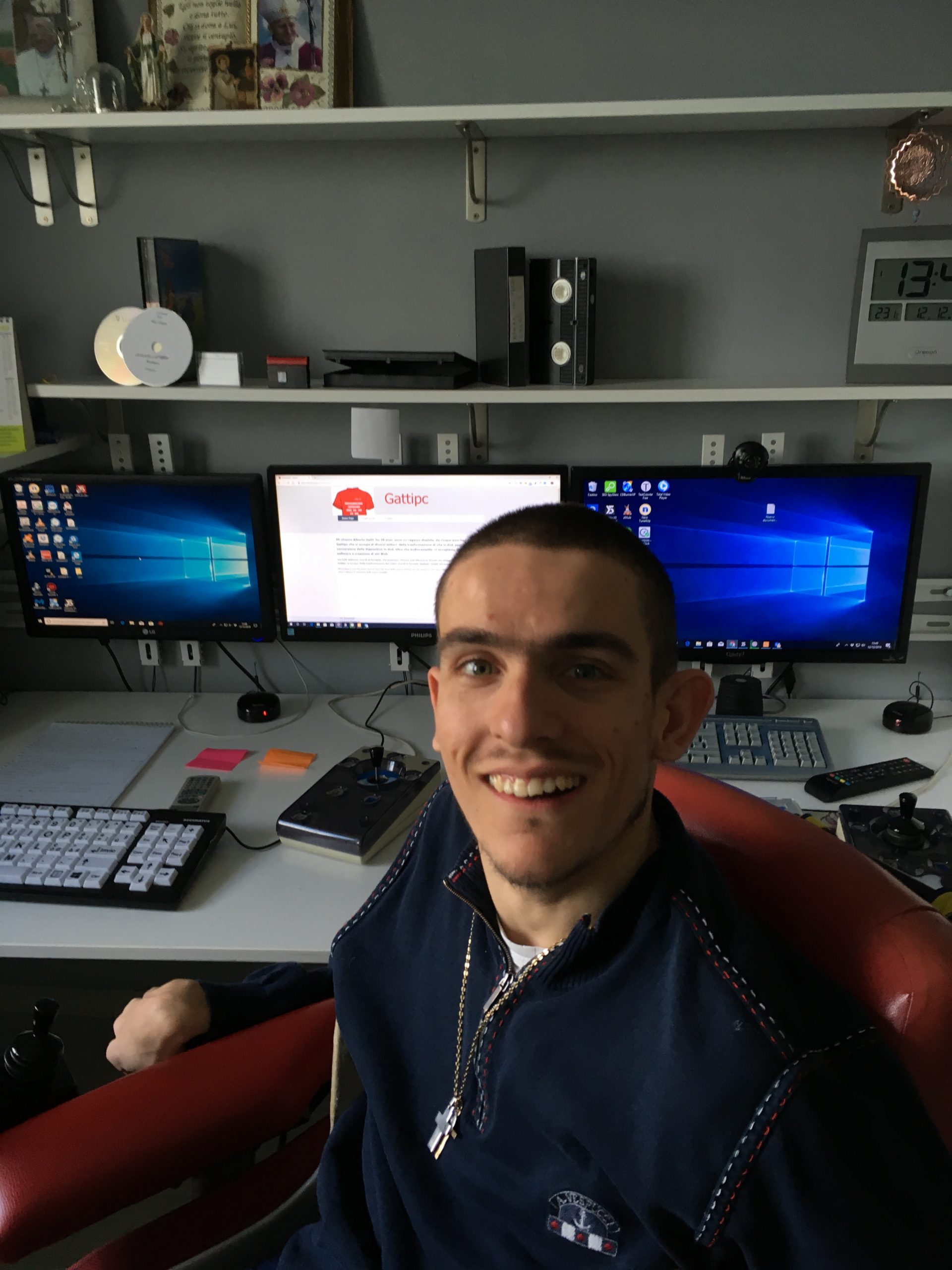Very often the world of disability is associated with the world of information technology because computers (which remain machines) have the function of facilitating life for mankind and in particular for those who have greater difficulty.
The biggest difficulties in this field are finding the tools, both hardware and software most possible to suit your needs.
Basically there are two broad categories of functions that everyone does, and we have to do, type and click the mouse.
From here, all the other applications start, it becomes like the mathematics that gives rise to physics, chemistry etc. As for my experience, I use two hardware (mouse and keyboard) almost interchanging them in the sense that through a special application I can write with the mouse through an on-screen keyboard or move the mouse with the keyboard through easy access.
There is also the possibility of having adaptable keyboards: for example, the Auxilia company in Modena has created an “intellikeys” keyboard that I use on a daily basis, which has the exact same functions as one normal keyboard, only larger with holes that allows you to press one key at a time and has the
possibility to press several keys at the same time without having to physically hold down three keys at a time.
Slow writing is common for disabled people as disabilities slow down many movements. While now having the possibility to press the keys, we still do it very slowly. This being the case, there is the typing assistant prediction software that allows you to type for example “ho” and being able to complete the word “home” with a key and so greatly reducing the expected time to complete sentences.
The software exists for voice reproduction of the text to communicate through the PC too. if I type for example the word “home” the software will say the word “home”. I think it is very useful especially to teach vocality.
One of the IT problems that I have encountered in my experience is that of writing mathematical language which seems an oxymoron as computer science is applied mathematics!
To try and have less difficulty, I have personally created a macro that has output as an exe software, but which is applicable on all other software, so using a hardware intellikeys which has been specially pre-set, you can write math.
Furthermore, since I am a computer enthusiast, I also made a software for the management of centres for the disabled. Generally, more than one software (word, excel) is used in data management and this can lead to confusion, repetition or even data loss. My program being unique and including the functions mentioned below prevents this from happening, as the information is automatically related to each other.
The program gives the possibility to:
Archive personal data
Count the monthly and annual hours of the operators
Plan the hours of the employees
Search for data e various information
Analyse data entered
View the clinical-family history of each user
Create notes relating to the individual user or group
Manage the activities of the centre
I have only mentioned a few cases but there are millions of them.
The world of disability has surpassed enormous difficulties thanks to information technology, therefore studying and updating by adapting the software to the various disabilities is fundamental not only for the disabled but also because through the development of software, it can simplify various aspects of everyone’s life.
For example, if I have to do a systematic operation, I can do it by hand or I can set up a macro that automates the steps.
When asked “do you want a person with a disability to marry information technology”? My answer without hesitation is: Yes, I want this!
